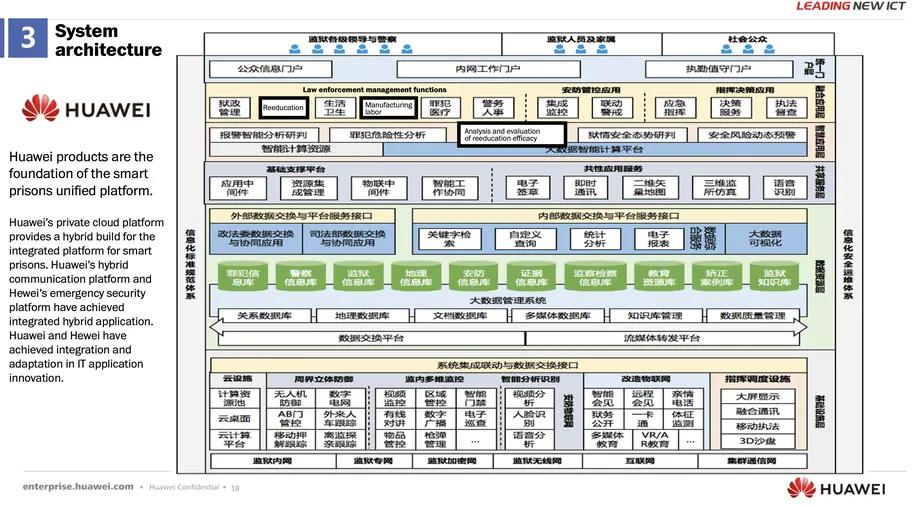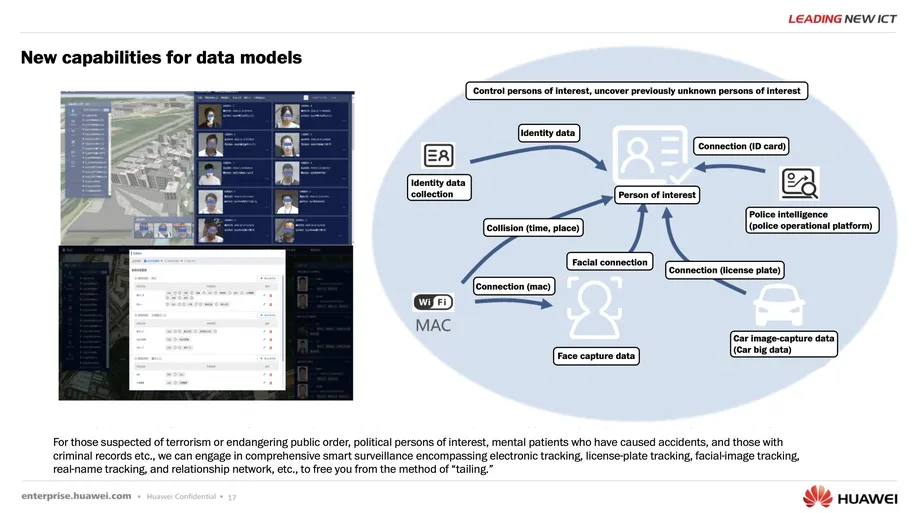
According to PowerPoint slides received and translated by The Washington Post, Huawei was involved in developing equipment for labour and reeducation centres, as well as monitoring systems in China’s Xinjiang province. The research details some of the ways in which the internet behemoth’s work has aided in the persecution of ethnic minorities in the region.
The PowerPoints were downloaded from a public Huawei site, according to the Washington Post, before they were taken down.
According to the report, the slides detailed Huawei’s collaboration with other companies in the development of multiple systems, with metadata ranging from 2014 to 2020. (with copyright dates being listed from 2016 to 2018).
On one of the slides, Huawei’s products are described as “the foundation of the smart prisons unified platform,” with references to manufacturing labour and reeducation efficiency analysis. According to The Washington Post, some of the prisons where Huawei’s technology is employed are in Xinjiang, a region dominated by Uyghur Muslims.
The Chinese government has been accused of committing numerous human rights crimes against the Uyghurs, including incarceration, reeducation, and forced labour. (The usage of this labour has been linked to many tech companies.)
 A surveillance technology employed in Xinjiang is described in another presentation translated by The Washington Post. It describes how police in the region’s capital, Ürümqi, employed a facial recognition system to apprehend a fugitive. Huawei’s work on a facial recognition system that may trigger an alarm if it identified someone as a Uyghur was described in a study by video surveillance researchers in 2020.
A surveillance technology employed in Xinjiang is described in another presentation translated by The Washington Post. It describes how police in the region’s capital, Ürümqi, employed a facial recognition system to apprehend a fugitive. Huawei’s work on a facial recognition system that may trigger an alarm if it identified someone as a Uyghur was described in a study by video surveillance researchers in 2020.
According to The Washington Post, Huawei’s surveillance system demonstrations make no mention of Uyghurs, and the company has denied directly transferring technology to Xinjiang.
 Other slides in the Post’s investigation reveal technology for identifying persons based on their voiceprint, tracking people’s position using surveillance footage, and monitoring employees at work.
Other slides in the Post’s investigation reveal technology for identifying persons based on their voiceprint, tracking people’s position using surveillance footage, and monitoring employees at work.
For allegedly assisting the Chinese government in conducting surveillance on minority groups in the Xinjiang area, many organisations have been placed on the US government’s Entity List (which restricts how US corporations can do business with them). DJI is a good example, but few companies have gotten as much attention from the US government as Huawei, owing to former President Trump’s trade dispute with China.
The US government recommended that telecom companies spend their money with Huawei’s competitors in February 2020, accusing the corporation of installing backdoors into its equipment.












